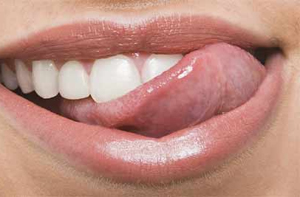Washington D.C., Apr 4: While consuming a high-diet salt can result in high blood pressure, a recent study has revealed a link between salt-rich diet and weaker immune system.
The study was conducted under the leadership of the University Hospital Bonn, and the results were published in the journal Science Translational Medicine.
The research was conducted on mice that were fed a high-salt diet. Later, they were found to suffer from much more severe bacterial infections.
Human volunteers who consumed an additional six grams of salt per day also showed pronounced immune deficiencies.
The World Health Organization (WHO) has recommended a maximum amount of five grams of salt a day.
It corresponds approximately to one level teaspoon. In reality, however, many Germans exceed this limit considerably.
Figures from the Robert Koch Institute suggest that on average men consume ten, and women more than eight grams a day.
This means that we reach for the salt shaker much more than is good for us. After all, sodium chloride, which is its chemical name, raises blood pressure and thereby increases the risk of heart attack or stroke.
"We have now been able to prove for the first time that excessive salt intake also significantly weakens an important arm of the immune system," said Prof. Dr. Christian Kurts from the Institute of Experimental Immunology at the University of Bonn.
This finding is unexpected, as some studies point in the opposite direction. For example, infections with certain skin parasites in laboratory animals heal significantly faster if these consume a high-salt diet.
The study also sheds light on the fact that the skin serves as a salt reservoir.
"Our results show that this generalization is not accurate," emphasized Katarzyna Jobin, lead author of the study.
The body keeps the salt concentration in the blood and in the various organs largely constant. Otherwise important biological processes would be impaired. The only major exception is the skin which functions as a salt reservoir of the body. This is why the additional intake of sodium chloride works so well for some skin diseases.
However, other parts of the body are not exposed to the additional salt consumed with food. Instead, it is filtered out by the kidneys and excreted in the urine.
"We examined volunteers who consumed six grams of salt in addition to their daily intake," said Prof. Kurts. This is roughly the amount contained in two fast-food meals, i.e. two burgers and two portions of French fries.
After one week, from the results, it showed that the immune cells coped much worse with bacteria after the test subjects had started to eat a high-salt diet.
In human volunteers, excessive salt intake also resulted in increased glucocorticoid levels.
 Chewing requires a complex interplay between the tongue and jaw, with the tongue positioning food between the teeth and then moving out of the way every time the jaw clamps down to grind it up.
Chewing requires a complex interplay between the tongue and jaw, with the tongue positioning food between the teeth and then moving out of the way every time the jaw clamps down to grind it up.




Comments
Add new comment